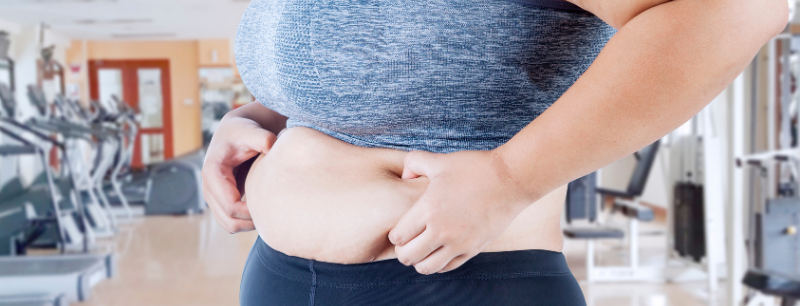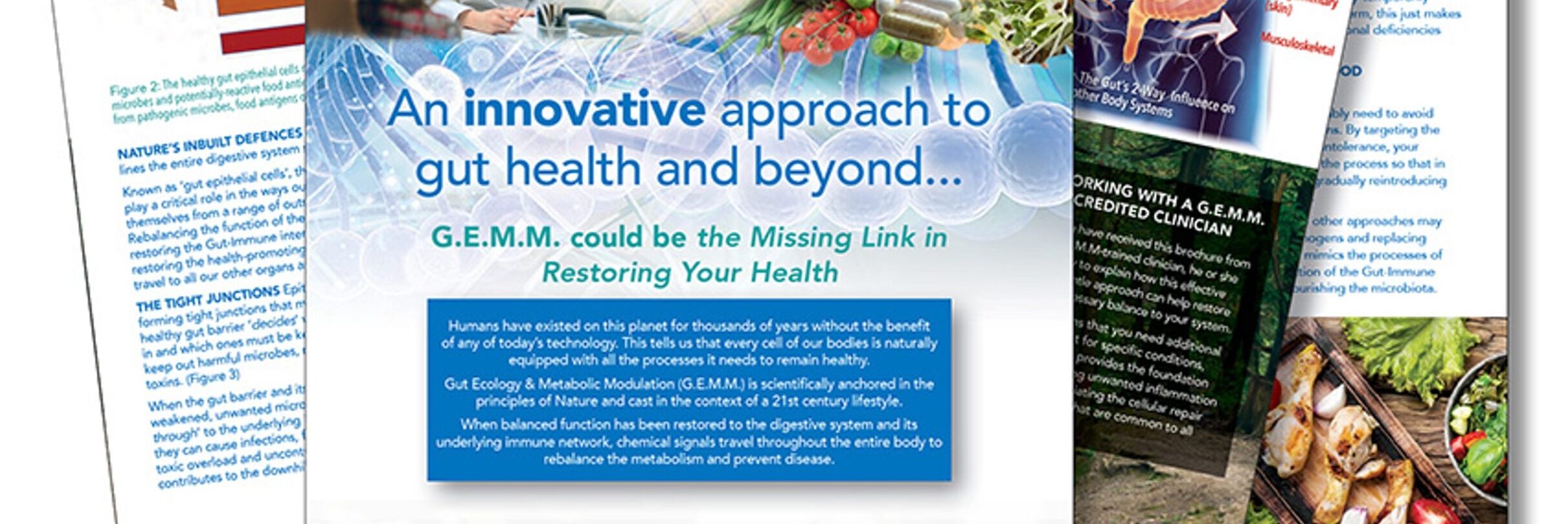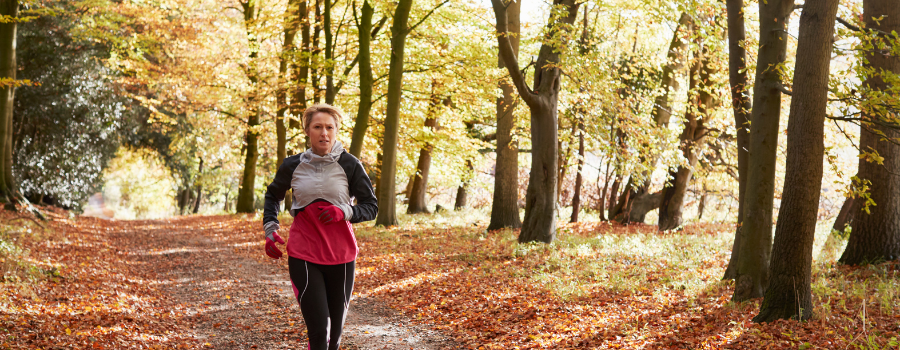Weight gain despite eating less and exercising more
Have you experienced weight gain, especially around the waist even though you are exercising the same amount or even more than before and you have reduced your calorie-input throughout the day?
Exercising more and eating less when you are in menopause just doesn’t seem to work. The reason for this is that oestrogen directly affects structure and function of musculoskeletal tissues including muscles, tendons, and ligaments. Oestrogen not only improves muscle mass and strength, but it also increases the collagen content of connective tissue (Chidi-Ogbolu and Baar 2019). Progesterone is another big player in maintaining muscle- and bone-mass. After menopause women not only spend a good third of their life with low levels of oestrogens but progesterone-production via the reproduction cycle completely halts. Only minimal amounts of progesterone are produced via the adrenal cortex and often serve as a precursor to the “stress-hormone” cortisol, thus progesterone-levels will be further reduced by increased stress-levels. When progesterone was administered in a postmenopausal women-study, a 50% increase in muscle protein synthesis was observed (Hansen 2017).
Cardiovascular fitness is gold-standard for fat-loss, but not for a woman in her 40s
For anyone below 35 years of age, cardiovascular fitness has been considered the gold-standard for fat-loss. However, at around age 35-40 our body moves into a catabolic phase, which means muscles and bones start breaking down at an average yearly rate of 1-2%. Unlimited cardiovascular fitness-training will increase physical stress-levels, increase cortisol, and therefore break down more muscles instead of building them.
Muscles mass becomes the most important endocrine organ in peri- and menopause
During perimenopause and menopause muscle mass becomes the most important endocrine organ of the body. Although continuing intense workouts may be counterproductive for the peri- or postmenopausal woman as average cortisol levels increase significantly, it is paramount to keep up a training-program that takes the changing hormonal landscape into account and that aids in building muscle and hence bone mass. Exercise typically reduces stress hormones, such as adrenaline and cortisol and stimulates the production of endorphins, the body’s natural mood-elevators and painkillers.
Adjust your training, include rest, alternate with strength, high intensity and resistance
We don’t need to forgo cardiovascular exercise as it’s amazingly nourishing for the mitochondria (the powerhouse of the cells) but we may need to adjust our training, incorporating more rest and restore time, alternating with strength and resistance and include high-intensity interval training (HIIT), if one’s joint-health allows it. HIIT refers to an intermittent style of exercise in which very high intensity exercises are interspersed with short periods of recovery within a single training session. It has shown to have the biggest impact on weight-loss and muscle-building in studies and was concluded to induce positive effects on functional abilities and metabolism throughout the older population, significantly increasing muscle mass and decreasing body fat (Buckinx and Aubertin-Lehedre 2019).
Muscle mass determines your looks, regulates insulin, metabolism, inflammatory and immune response
According to Dr. Gabrielle Lyon muscle mass doesn’t just determine how your body looks. It regulates how much carbohydrate you can consume and what your body composition (proportion of fat relative to muscles) and your metabolism look like. A 45-year plus old body becomes less efficient at sensing protein, which is the key factor to stimulate muscle mass. In other words, muscle mass becomes your metabolic currency, regulating insulin, metabolism, inflammatory and immune response. Contracting muscles also help to remove metabolic waste-products and the burning of calories and it is important for brain- and bone-health (Lyon in perimenopause- and menopause summit, 2021).
Optimal results include a relaxed nervous system
So instead of a prolonged cardio-workout that creates stress in the body, increases cortisol and therefore decreases muscle mass and increases belly fat, we take stock in where we can adjust our exercise-program and the way we eat. The key for optimal benefits is to relax our nervous system as much as possible, reducing stress-induced cortisol that prevents muscles being built when we exercise. It may be the time to practice presence and not to look at speed and numbers anymore. Any form of movement is good, just remember more is not better.
Nourish your Nerves and Support your Hormones with:
- Short, slow to moderate length walks
- Gentle Yoga – as opposed to strong resistance-Yoga practiced to achieve Healthy Bones & Joints, Tai Chi or Pilates
- Stretching and gentle dancing
Set your program to build muscles:
- 2x week strength training either with weights and a coach and/or with Yoga for Healthy Bones & Joints, alternating dynamic movement and holding the poses for at least 20-30 seconds.
- 1-3x week interval or burst training for 15-20 minutes (more is not better): do your regular walks, interspersed with brisk walks or short sprints to get breathless for around 30 seconds then rest for one minute.
- Include one to two resting days – especially if you are emerging from complete exhaustion.
Resistance exercise increase DHEA levels
A study that included 30 cross-trained women, aged 19-69 years, who completed an endurance exercise session (ES), a resistance exercise session (RS), and a control session (CS) in a randomized, balanced design showed significant increase in DHEA levels with resistance exercises but not following the endurance exercises (Copeland, Consitt and Tremblay 2002). DHEA levels subsequently decrease as we get older and is important in adrenal health, weight loss, increase in muscle mass and decrease in fat mass.
High intensity training best done in the morning when cortisol is naturally high
Note that cortisol levels are highest in the morning around 8am, so HIIT is best done in the morning. Heavy exercising in the afternoon may be counterproductive, precious progesterone will be converted into cortisol via the adrenal pathway, which subsequently won’t be available at night to maintain a calm and relaxed mind plus it may lead to increased hot flashes and anxiety. Gentle stretching, walks, or mindful slow Yoga, however, will assist your body to settle into a good night’s sleep.
The next post will look into what diet helps to boost those muscles. Remember it’s not just benefitting our looks, muscles are our metabolic currency.
Written by Monika Ramasamy, 12/3/2021




